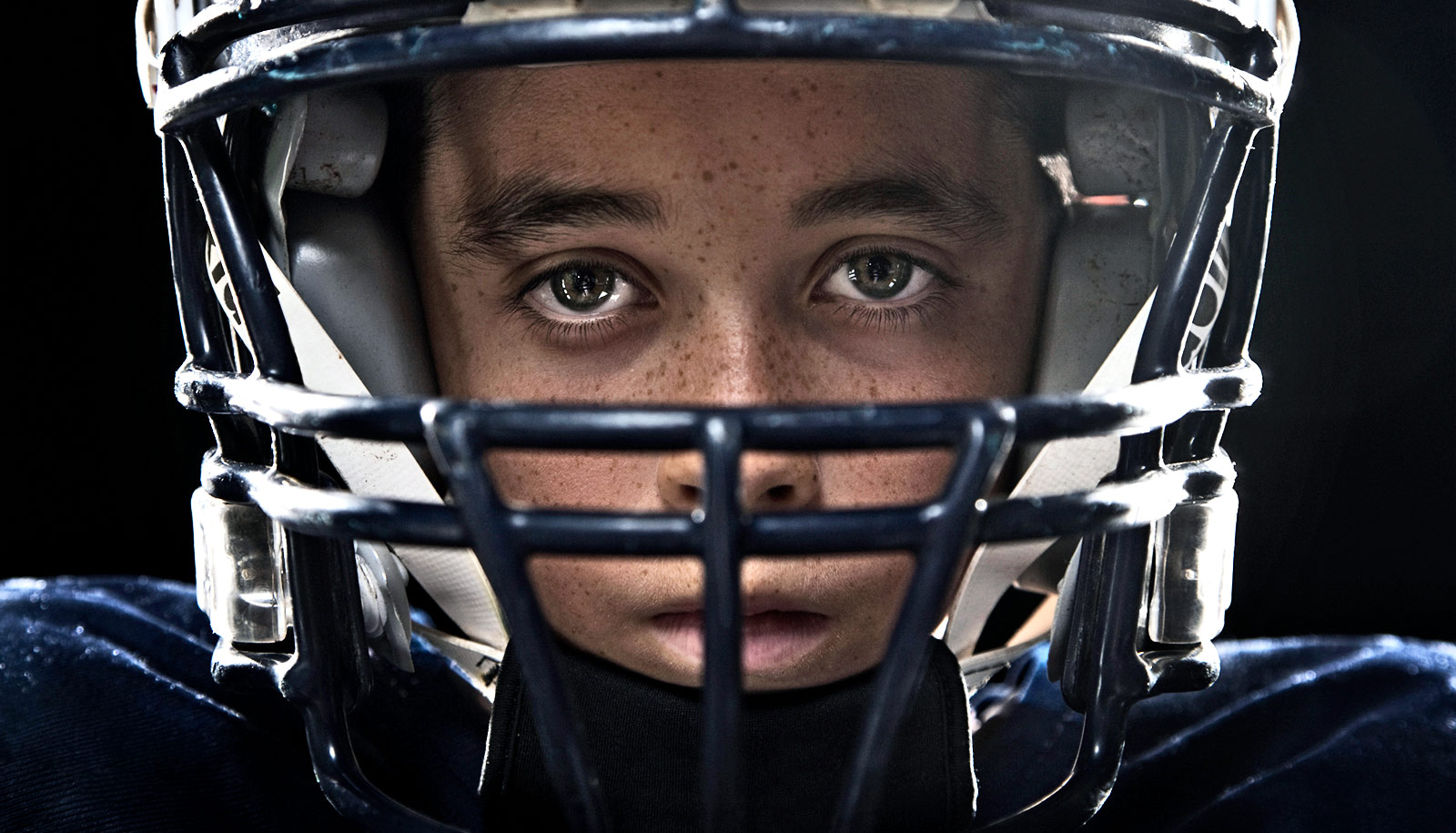Playing youth tackle football may lead to earlier onset of cognitive, behavior, and mood symptoms in later life, according to a new study.
“The younger they started to play football, the earlier these symptoms began.”
Researchers conducted telephone clinical interviews with family and friends of 246 deceased football players and found that those who began tackle football before age 12 experienced symptoms an average of 13 years earlier than those who started playing at age 12 or older.
“Thirteen years is a huge number,” says Michael Alosco, an assistant professor of neurology at Boston University School of Medicine, and lead author of the study in the Annals of Neurology. “The younger they started to play football, the earlier these symptoms began.”
The researchers, who controlled for total years of play, level of play, and factored in what decade athletes started playing (to account for different styles of play and protection through the years), found that each year younger that athletes began to play tackle football correlated with an earlier onset of cognitive problems by 2.4 years, and behavioral and mood problems by 2.5 years.
“There is something unique about the age you start playing football,” says Alosco. “There is something about it that is contributing to those symptoms.” He notes that some athletes included in the study began playing tackle football as early as age 5 or 6.
“There is a recommendation that children under the age of 14 shouldn’t play tackle football,” says senior author Ann McKee, chief of neuropathology at Boston VA Healthcare System and director of Boston University’s CTE Center. “This paper would provide some support for that.”
Not just CTE
The researchers were surprised to find that younger age of exposure to football was not associated with increased pathology in the brain. Furthermore, the relationship between younger age of exposure to football and earlier symptom onset occurred both in players who were diagnosed with Chronic Traumatic Encephalopathy (CTE), a progressive degenerative brain disease found in people with a history of repeated head trauma, and those who were not.
“I think that’s a really important result of this study,” says McKee, who notes that 211 of the players in this study had been diagnosed with CTE after death, while the brains of most of the remaining 35 showed signs of other neurodegenerative diseases, like Alzheimer’s disease.
“This finding wasn’t just for people who died of CTE, this was for people with any disorder that affected their cognition, behavior, or mood. Early exposure made them more susceptible to any later life pathology,” says McKee, who hypothesizes that early exposure to tackle football somehow decreases a person’s “cognitive reserve”—their ability to resist symptoms of any brain disease.
Parents and Pop Warner
Alosco points out that the years before age 12 are especially critical for brain development, and that may have played a role in the findings.
AI can detect athlete’s concussions years later
“Those are the ages where the gray matter of your brain is really growing, the vasculature of your brain is really growing, the connections between neurons are forming,” he says. “Neurodevelopment is really at its peak.”
The study has several important limitations, most notably selection bias in the brain collection itself—families of players with symptoms of neurodegeneration are far more likely to donate brains to research. In addition, Alosco and his colleague Jesse Mez, an assistant professor of neurology at BU School of Medicine, gathered data on symptom onset by interviewing family members of players, who may not have perfect recall.
Despite the limitations, the research adds to a growing body of evidence pointing to the dangers of repeated head trauma, especially in young athletes, and it appears to validate increasing concern among parents and players. The number of American kids ages 6–12 playing tackle football dropped to 1,217,000 in 2016, down slightly from 1,262,000 in 2015, according to the Sports & Fitness Industry Association. Pop Warner, the largest youth football program in the world, has officially limited contact during practices since 2012.
McKee and Alosco hope that the findings will further elucidate risk factors for neurodegenerative diseases like CTE, and eventually pave the way for early detection of CTE, which currently is only diagnosed by autopsy.
Brains of contact and non-contact sport athletes aren’t the same
“Continuing to tease apart what affects the disease development, what affects the symptoms, will help us move forward and eventually identify who’s at risk,” says Alosco, “and eventually develop diagnostic clinical criteria.”
The National Institute of Neurological Disorders and Stroke, the Department of Defense, and others funded the study.
Source: Boston University



